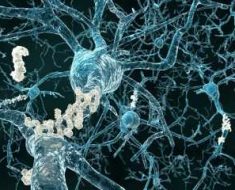
- Ovarian cancer is the fifth most common cause of cancer death in women in the United States.
- Early diagnosis gives a higher chance of successful treatment.
- However, ovarian cancer is hard to diagnose as symptoms are often similar to those of gastrointestinal disorders.
- Now, new research has identified three previously unknown proteins from ovarian cancer that can be detected in the blood.
- These may facilitate ovarian cancer diagnosis, allowing treatment to start early when it is likely to be most effective.
Ovarian cancer is any cancerous growth that starts in the ovaries — organs low in the abdomen that produce eggs in females.
Rates of ovarian cancer have decreased in recent years but, according to the Centers for Disease Control and Prevention (CDC), it causes more deaths than any other cancer of the female reproductive system.
Symptoms of ovarian cancer, which mainly develops in older women, can be mistaken for signs of other gynecological or gastrointestinal disorders, as they may include:
- pelvic pain or pressure
- unexpected vaginal bleeding
- abdominal or back pain
- bloating, or a feeling of fullness when eating
- changes in bladder or bowel habits, such as more frequent urination and constipation.
If ovarian cancer is detected early, treatment is usually effective, with some 94% of people living for at least 5 years following diagnosis. However, only about 20% of ovarian cancers are found at an early stage, and there are currently no reliable screening tests.
New research led by Nagoya University in Japan has now identified three previously unknown membrane proteins in ovarian cancer, which can be isolated from body fluids, such as blood, urine, and saliva.
The authors of the study, which is published in Science Advances, suggest that these findings may lead to an earlier diagnosis of ovarian cancer.
Dr. Samuel Godfrey, research information lead at Cancer Research UK, not involved in this study, explained to Medical News Today what the research achieved:
“For this study, researchers explored whether tiny ‘bubbles’ that come from ovarian cancer cells could act as warning signals for the disease, and their results suggest this approach could be worth exploring further.”
Study finds new biomarkers for ovarian cancer
The researchers extracted extracellular vesicles (EVs) from high-grade serous carcinoma (HGSC), the most common type of ovarian cancer.
Cancer cells produce EVs to promote cell growth and survival and increase invasive and metastatic activity. Exosomes, a type of small EV, play an important role in cancer progression.
Using liquid chromatography-mass spectrometry, the researchers then analyzed the proteins contained in small and medium/large EVs.
“The validation steps for the identified proteins were tough because we had to try a lot of antibodies before we found a good target,” Dr. Akira Yokoi, lead author, and assistant professor at the Nagoya University Hospital Department of Obstetrics and Gynecology, Japan, notes in a statement.
“As a result, it became clear that the small and medium/large EVs are loaded with clearly different molecules. Further investigation revealed that small EVs are more suitable biomarkers than the medium and large type. We identified the membrane proteins FR-alpha, Claudin-3, and TACSTD2 in the small EVs associated with HGSC,” he adds.
Having identified the proteins, they had to work out how to separate the EVs from blood samples, to determine whether they could be used to detect ovarian cancer.
To capture the EVs, the group used specialized technology using nanowires. They found that polyketone chain-coated nanowires (pNWs) were ideal for separating exosomes from blood samples.
“We must have tried three-four different coatings on the nanowires. Although polyketones are a completely new material to use to coat this type of nanowire, in the end, they were such a good fit.”
– Dr. Akira Yokoi
Potential for earlier diagnosis
“Diagnosing cancer earlier is perhaps the most important thing we can do to boost survival, but doctors lack reliable tests to help them do this for most cancers. Ovarian cancer becomes much harder to treat at later stages, and its symptoms can easily go unnoticed,” Dr. Godfrey told us.
At present, only one biomarker, Cancer Antigen 125 (CA125), is available for ovarian cancer diagnosis. Although CA125 has played an important role in the screening, treatment, and follow-up phases of ovarian cancer management over the past 40 years, it has shown little promise in early diagnosis.
If a person presents with symptoms that suggest ovarian cancer, the doctor may use a number of tests to diagnose it. These might include a transvaginal ultrasound examination, CT scan, or laparoscopy — in which a small incision is used to insert a camera into the abdomen — to look for any growths.
However, the only sure way to diagnose ovarian cancer is by a biopsy, which involves removing part of the tumor for laboratory analysis. A diagnostic method that used a simple blood test would be a huge step forward.
Experts call for further research
The study authors suggest that each of the three new proteins they discovered may be useful biomarkers for detecting ovarian cancer at an earlier stage.
“Our findings showed that each of the three identified proteins is useful as a biomarker for HGSCs,” Dr. Yokoi says. “The results of this research suggest that these diagnostic biomarkers can be used as predictive markers for specific therapies.”
While welcoming the research, Dr. Godfrey stressed that these were early findings.
“The research only used a small number of clinical samples, so it’s too soon to say whether the technology could reliably help us spot ovarian cancer early,” he told us.
“We need to see more research into diagnostic tools like this because, if they work, they could make big changes to how we treat a variety of cancer types,” he added.
Source: Read Full Article





